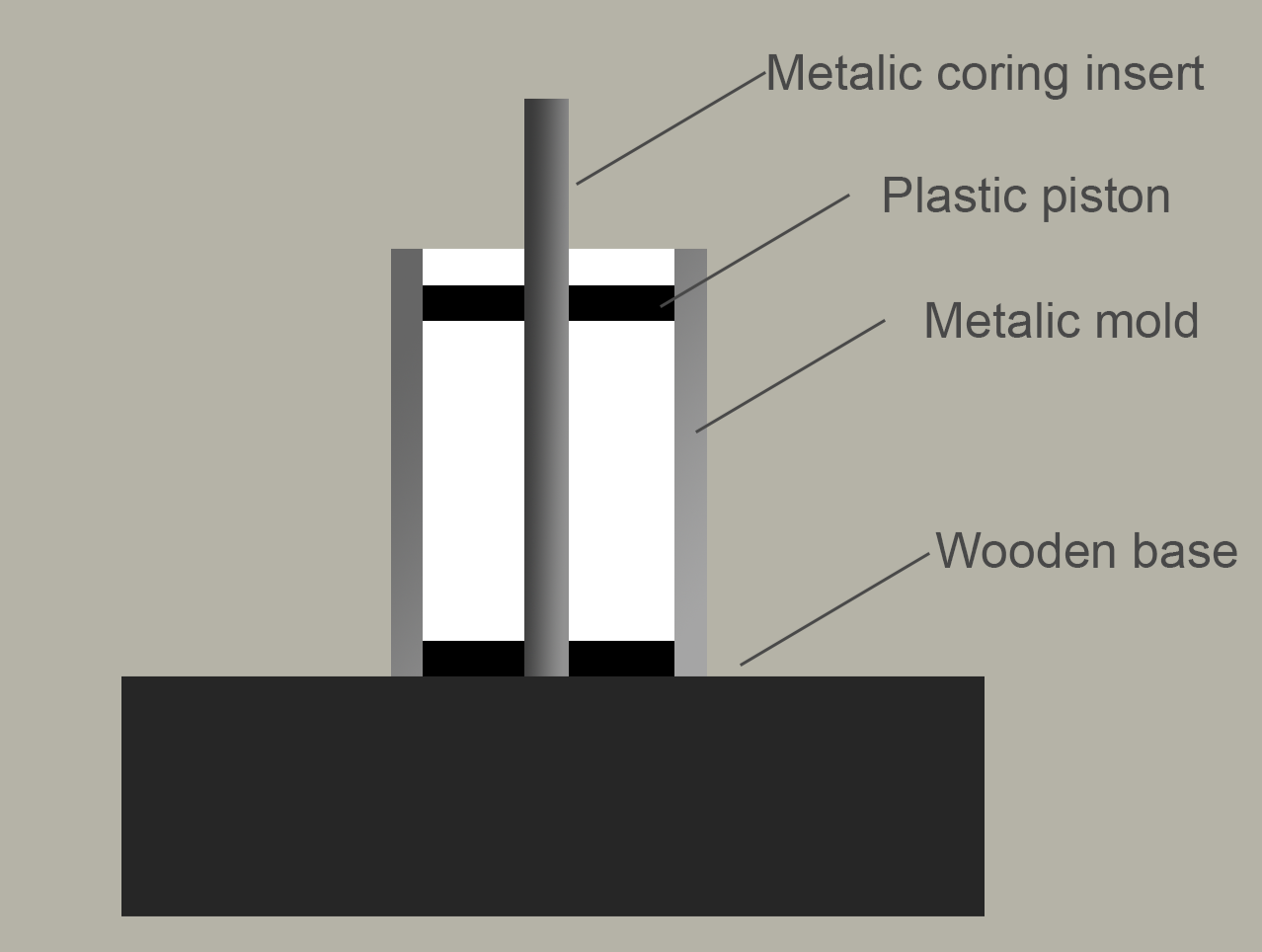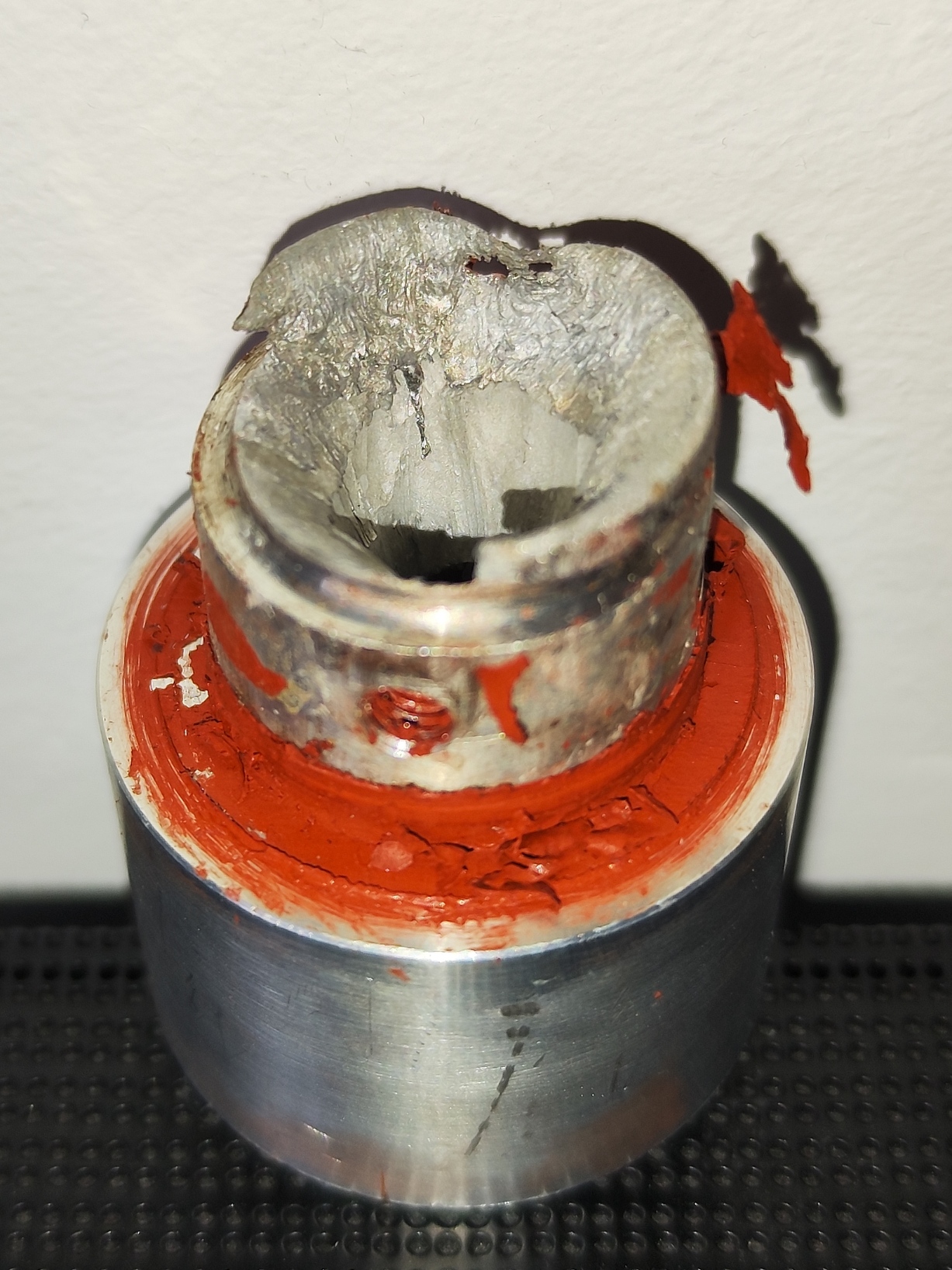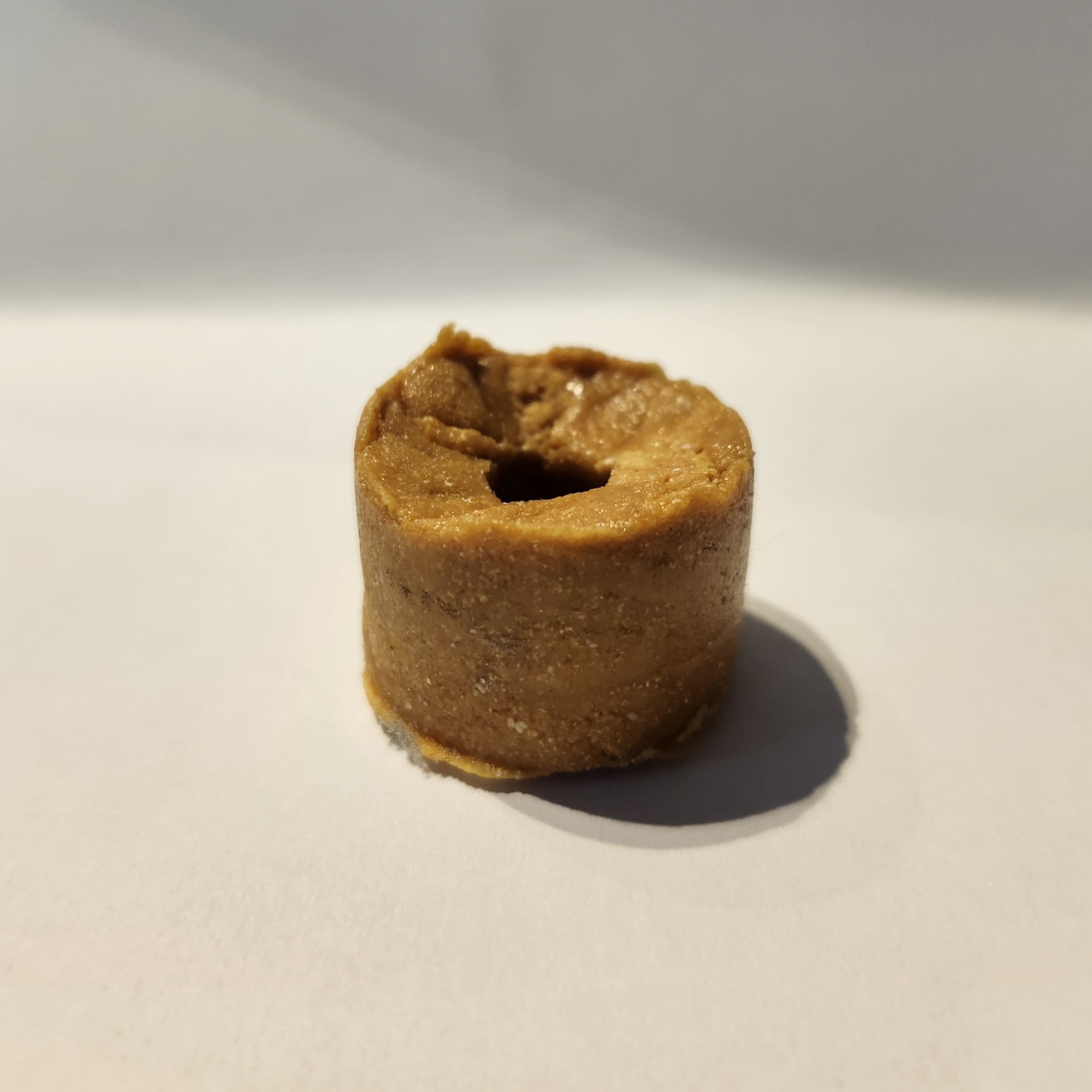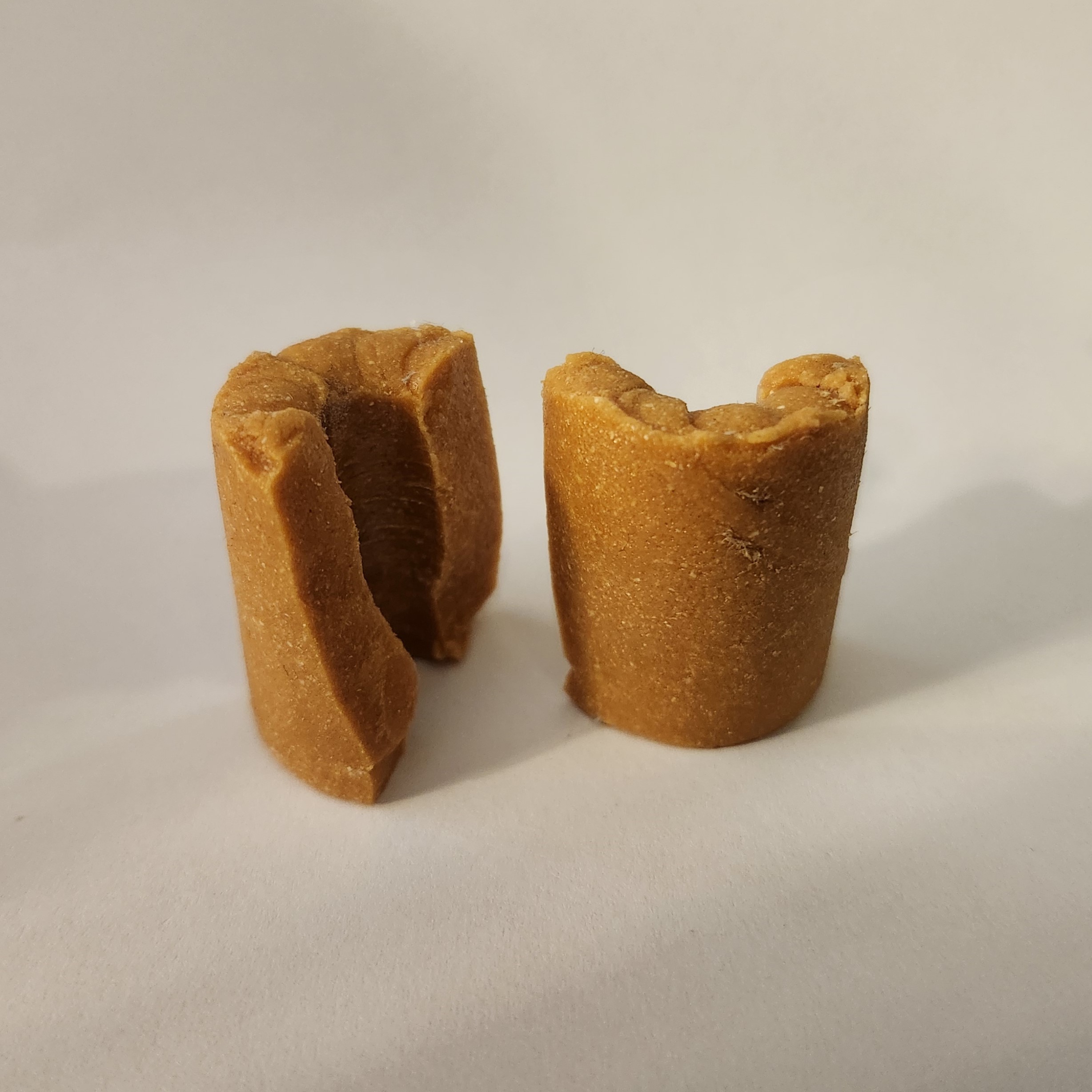V.4 First Edition
The V.4 FE
Developing of this engine started in mid january, when I was in the United
States as an exchange student. As it turns out, in the U.S it is legal to perform engine tests as long as they are on
your private property and don't actually fly.
V.4 platform based motors
The V4 first edition rocket motor is a medium-small sized rocket engine
that produces around 350 Newtons. It's based on a propellant called KNDX (again, thanks to R.Nakka for providing the details
for this propellant). It's internal chamber pressure is around 700 psi.
Propellant casting
The arguably most frustrating part of the process is the propelant casting.
I had multiple failed attempts, as the pictures on the right show.
 Diagram of the first version of the mold.
Diagram of the first version of the mold.
 Diagram of the second version of the mold.
Nozzle design and manufacturing
The nozzle was carefully calculated using different tools, but mainly information from Richard Nakka's site.
Then it was designed using Fusion 360 and machined out of aluminum by a machining service.
Aluminum has a low melting point, so it got pretty damaged by the firing of the engine (picture on the right). Below are pictures of the CAD model.
Diagram of the second version of the mold.
Nozzle design and manufacturing
The nozzle was carefully calculated using different tools, but mainly information from Richard Nakka's site.
Then it was designed using Fusion 360 and machined out of aluminum by a machining service.
Aluminum has a low melting point, so it got pretty damaged by the firing of the engine (picture on the right). Below are pictures of the CAD model.


 Testing
The test was extremely successful. Everything went as calculated and the force sensor showed that the peak thrust was at about 370N. The chamber pressure spiked to over 700psi.
Testing
The test was extremely successful. Everything went as calculated and the force sensor showed that the peak thrust was at about 370N. The chamber pressure spiked to over 700psi.
 My very first attempt was very unsuccessful, too many voids, caused by absence of piston to compress it.
My very first attempt was very unsuccessful, too many voids, caused by absence of piston to compress it.
 Second attempt, this time I used a stick to push the fuel, still not enough compression, visible voids. That was the first time that I noticed that cardboard isn't a great mold.
Second attempt, this time I used a stick to push the fuel, still not enough compression, visible voids. That was the first time that I noticed that cardboard isn't a great mold.
 Third and last failed attempt, the propellant grain split in half due to a harsh extraction. Last time I used a cardboard mold.
Third and last failed attempt, the propellant grain split in half due to a harsh extraction. Last time I used a cardboard mold.
 Different angle of second attempt
Different angle of second attempt